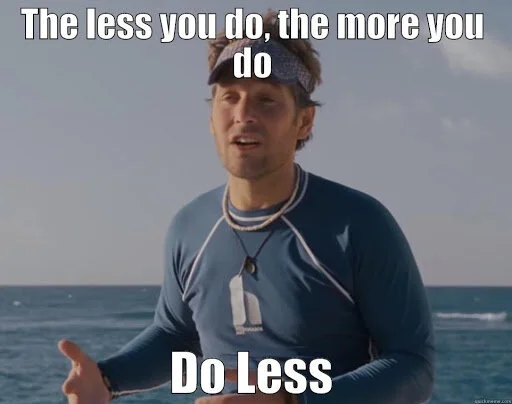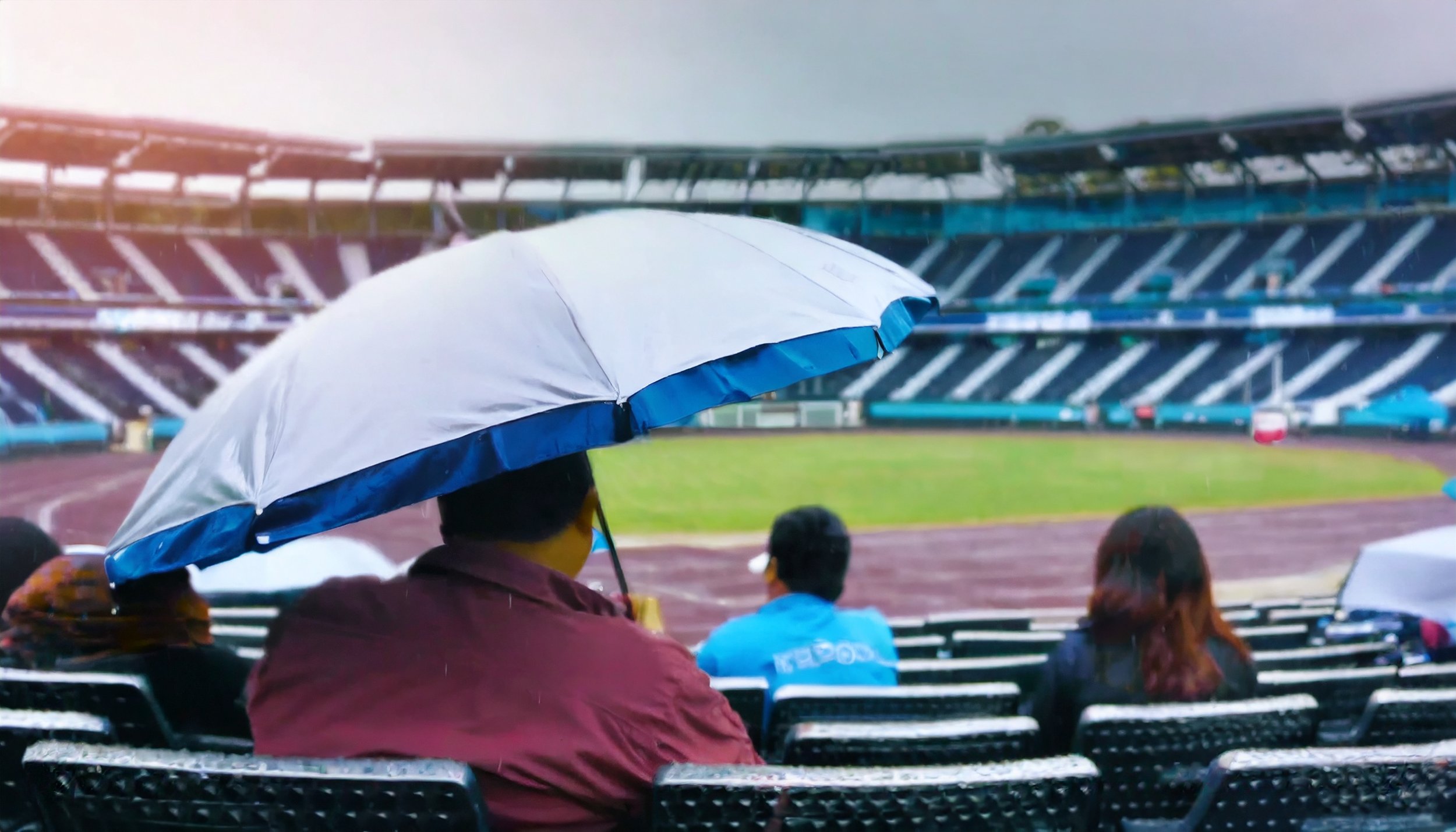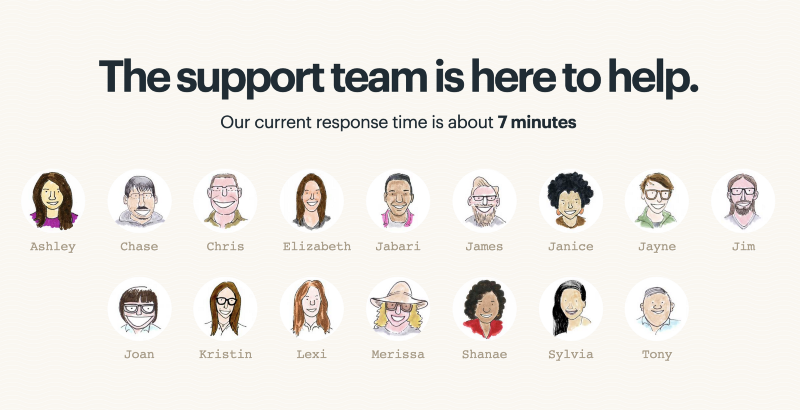The Complexity of Simple
Consider this: you and your spouse are about to take a long weekend trip by yourselves for the first time since the birth of your child. You have hired your parents to stay at your home and babysit. Your flight is on schedule and you’ve hit the airport bar to begin the celebration of escape with pre-flight cocktails. The phone rings. Your mother is on the other end, wondering how to turn on the TV so that your son can watch his favorite show.
Normally, this wouldn’t be such an issue, but you’ve spent the better part of a year making small modifications, updates, and upgrades to optimize your home entertainment system (and your monthly bill). Now, what seems so simple to you seems like brain surgery to someone else. So where do you start?
How do you take something complex and turn it into something simple?
Mind the (user) gap
“What is this? A center for ants? How can we be expected to teach children to learn how to read…if they can’t even fit inside the building?”
— Derek Zoolander, Zoolander
Thousands of people (myself included) have dedicated their professional lives to crafting the ideal experience, object, or plan for the world to enjoy. We create requirements and directives. We abide by, (and often break) the time-tested rules of design as determined long ago by forefathers such as Leonardo da Vinci, Frank Lloyd Wright, and Paul Rand. But at the end of the day, the result is subject to individual preferences. What works for one person may not be acceptable to another.
As experience and product designers we aspire to keep things simple while also considering additional key factors:
Stakeholders
Budget
Time
Research
Development process
Design details
These factors cannot be outright ignored, but the key is to find the right balance between them. Obsessing over any one or few of them can quickly complicate any attempt at simplicity. For example, too much research can keep a company mired in second guessing and self-doubt at the expense of any type of resolution or innovation.
Focus your efforts
“Secret of punch is to make whole power of body fit into one inch.”
— Mr. Miyagi, The Karate Kid
Most of the time, the hardest thing about accomplishing a task is just getting started. I spent most of my summer slowly picking away at re-staining the deck outside my house, and it’s still not entirely complete as we head into workless winter months. Not until I thought of the process in simpler, smaller parts of the whole was I able to get going and see the progress sooner than I realized.
Want to wash the car? Take out the hose.
Want to repaint the kitchen? Buy the paint.
Many ideas die because the creator was too busy thinking about how or why to do something that they overlooked the value of taking a first step with the goal of getting a reaction. Based on feedback from this first step, you can adapt or stay the course. You’ll never know if the color of the new kitchen is going to work until you put some paint on the wall.
How do you keep yourself, or an entire team, in the right frame of mind to keep things simple? Fortunately, tools exist to help you do that. One of them, from the product design world, is the design sprint. The process guides a project team to simplify the focus of product design on the customer. And the four-day structure by its nature activates decision making. The outcome of the design sprint, an MLP (minimum lovable product), keeps the team focused on delivering the most lovable version of the product with the least amount of effort — which highlights simplicity because you cannot over-engineer an MLP with too many features. The customer focus, the rapid test-and-learn nature of the design sprint, and the MLP all act as built-in safeguards against complicating both design and development.
Get over yourself
“Don’t use seven words when four will do.”
— Rusty Ryan, Oceans 11
Perhaps the biggest obstacle in achieving simplicity is our own brain. The brain is designed and trained to handle complexity, so it can be easy for us to continue to add fidelity and unnecessary details to a given situation with the aim of painting a bigger picture. However, on the other side of that picture is another person trying to make sense of it so it’s important to clear the clutter and make room for the things that matter.
From a design standpoint, white space and brevity are key to simplicity. The more complex your product or idea is at the core, the simpler the surroundings should be. Fighting the urge to add another headline, more color, more dimension, or to fit content “above the fold” will help the brain focus on the essential information.
Think of an art gallery — blank walls, clean floors, minimal furnishings. The focus is on the artwork.
In conclusion
So how do I explain the television situation to my parents?
Slowly, one step at a time, and in clear terms with little embellishment.
The Unexpected Storm
Apr 01, 2020
Roughly nine months ago I wrote “What’s your product rain delay plan?” and offered some opinions on how business should (and some do) prepare themselves and their products for the unexpected — for the time when things don’t go as planned — for the rain delay. Never would I have imagined that I’d be writing this article as a follow up in the context of a global pandemic. One hell of a rain delay, with no true radar, and a drastic shortage of umbrellas.
Just like that, businesses of all types have been forced to change how they operate. Many have shifted their ways of working from in-person collaboration to employees working remotely from their homes. The scramble is on for finding the right tools for collaboration, virtual meetings, and communication. Retailers have either moved to an entirely virtual format or adapted with curbside, no-contact delivery. Regardless of how a business has been affected by the pandemic, processes and procedures that were once standard issue are now up for grabs. This is definitely not business as usual.
Now, before I continue, I realize that businesses are being disrupted by a pandemic that is claiming lives. Many people have died, many are dying, and many are ill. I am also fully aware of the individuals who continue to bravely do their jobs in the face of uncertainty and increased risk. To all those suffering and to those fighting the fight — the world’s thoughts and prayers are with you.
Even amid the human suffering, businesses need to adapt if they want to remain in business and provide employment. Frankly, shit’s gonna change. To help everyone succeed in this new environment, businesses (and employees) should keep a few things in mind.
For many people this may be their first foray into working from home and are still getting a handle on what time to get up, where to set up shop, what to do for lunch, et cetera. Just to make matters more complicated, for those with children there’s now the added stress of child care, home schooling, feeling guilty about spending quality time vs. screen time. For these reasons alone it’s important for employers and co-workers alike to do their best when it comes to becoming a bit more flexible with timing, expectations, and policies to establish and maintain the trust between all parties.
Transparent Communication Is Key
I've always believed that transparent communication is key to running a business, and in my opinion this is even more true of operating a business in the current state of the world. At Moonshot we try hard to make sure this is activated on a daily basis as a cornerstone of our culture. I also came across a very relevant example recently from a retail brand.
Obvious Shirts is a Chicago-based company producing t-shirts with simple statements on them, mostly aimed at sports culture and specifically for fans of the Chicago Cubs. As a fan and customer, I follow the brand on Instagram to keep an eye on sales and new merchandise, but recently came across the following on their story:
This message was delivered on March 14th, just as the nation was headlong into shutting down and shelter in place measures. I was immediately impressed by the direct addressing of not only issues that third party providers were having, but more importantly their own issues. What’s more, they offered a way for customers to contact them as well as their intended course of action. (side note: they also responded to my message complimenting them on their customer service example)
Opportunity for Change
With each passing day another industry is affected by this pandemic, and some of the hardest hit have been restaurants and small businesses that may not currently have any sort of digital component to their operations. However, as the strain and stumble continues, there is also an underlying component of new possibility underneath. As the famous saying by Frederick Douglass goes, “If there is no struggle, there is no progress.” Now is the time for not only addressing the obstacles which we need to overcome, yet also for beginning to look at new ways to improve products and processes as we enter a new era of society and business.
Perhaps the most obvious example of change so far has been the restaurants which had previously been solely a dine-in experience shifting their businesses to offer take away and delivery service at the drop of a hat. Not to mention, retailers scrambling to get products for sale online — thus not only opening up their products to another access point, but also to the potential of a much larger customer base.
Image courtesy of https://www.instagram.com/rootstockbar/
In addition, as more employees and students are working or studying remotely there are amazing opportunities for online learning such as Coursera and Masterclass and participation in streaming workshops or conferences.
Rethink Our Priorities
Finally, and perhaps most importantly, our current global situation opens up countless opportunities for humans to reconsider our priorities. As we’re “sheltered in place” with our loved ones and neighbors we should embrace the opportunity to get back in touch with friends online or on the phone, pick up new hobbies or develop new interests (looking at all the new bread bakers out there), or simply set aside technology and go for a walk. In the larger picture, I recently watched an interview of Jason Fried (Basecamp CEO & remote work advocate) hosted by Jonathan Courtney (AJ & Smart CEO) in which Fried had mentioned noticing how quiet the environment has become with the diminished air travel, which got me thinking — what if we instituted no fly Tuesdays? No drive Wednesdays? From a neighboring angle, what about a community grocery list? More community gardens? What if all apparel manufacturers would receive a tax credit for utilizing excess fabric to produce hospital gowns and masks? The possibilities are endless.
So What Now?
The short answer — I don’t know. Personally, I’m taking things day-by-day, but the in the grand scheme of things there are thousands of smart people in the world who are at the ready to brainstorm and get to work. If you think you have an idea for a solution, are in need of help with your current situation, or just want to bounce some ideas off some smart folks, myself and the team at Moonshot are ready. We’re working hard to educate our peers and clients alike in developing the most lovable experiences for whatever the situation or product may be through the practice and education of Design Sprints. What I will say is that now is the time to make every effort to consider the future and begin planning ahead — to begin thinking upstream vs. downstream — because there are ways to get in front of our challenges by leaning on the shoulders of others.
What’s Your Product Rain Delay Plan?
Jun 28, 2019
I’m a huge fan of baseball. More specifically, I’m a fan of live baseball games. The grilled hot dogs, the cold beer, the lush grass, the warm sunshine — it’s one of my favorite ways to spend a couple hours. But as summer goes, the possibility of pop-up storms arises. And while the weather is generally predictable (I still wouldn’t want that job), the reality may be surprising.
The rain delay is one of the more frustrating components of America’s past time. During a rain delay the experience of baseball breaks down, just as a website or a digital product like Netflix going down. The system goes down for an unknown amount of time. Limited knowledge is shared with the users (fans). We are left to our own assumptions and devices (literally, in most cases). The experience suffers, even if momentarily.
In the world of product and experience design we’re laser-focused on delivering a product that functions at its best, when it’s at its best. But what about when a product can’t function at its best? What about when a product has to function at its worst?
For a product to be lovable, a business must manage customer expectations for when the product is broken or the experience breaks down.
When it’s in a rain delay.
What’s your strategy when the unexpected happens? What happens when the system shuts down? When the road is closed? For an undetermined period of time? Are you prepared? Do you have a backup plan? What about customer support? How do you communicate what’s going on? What happens in the mean time?
How Basecamp Does It
Basecamp, the company which owns and produces the business and project management tool of the same name, is delightfully transparent of its goals and business decisions — from how their product pricing is determined to how they approach customer service and support. Over time, their support team has experimented with various required response times to customer issues. Interestingly, they landed on a response timeframe that is not too long to frustrate users, but not too short to seem automated and impersonal (I believe the target is 10 minutes). How did they figure this out? By getting feedback from their customers, of course. What’s more is that they communicate approximate response time on their support web page (below).
Snapshot from Basecamp’s Support Page
To bring it back to baseball for a minute, I was at a Chicago Cubs recently when a storm rolled in. Proactively, the organization did what they could to alert fans to prepare themselves for the delay, which was a welcome message. Then, once the storm had passed through, they posted an additional message about the estimated restart time. (This information is especially helpful when you’re waiting with two 7-year-olds.)
Photo by: instagram.com/cocohanks25
I realize these may seem like minor solutions, even obvious ones, but they play an important role in a person’s experience of the product. When circumstances are out of your control, you need to consider a number of solutions to maintain a lovable experience. The difficult part of the process is deciding which solution makes the most sense.
At Moonshot, when we have a decision to be made, or at least tried, we utilize Design Thinking to experiment with potential solutions that may make the most sense, ease the most burden, and make the unexpected more lovable (and maybe forgettable). One of our favorite Design Thinking processes is the Design Sprint. The Design Sprint begins with learning about your business, learning about your product, and most importantly learning about your customer/user. From that point, through open discussion and collaboration we create testable solutions for when the sh*t does hit the fan, and the lightning does strike.







